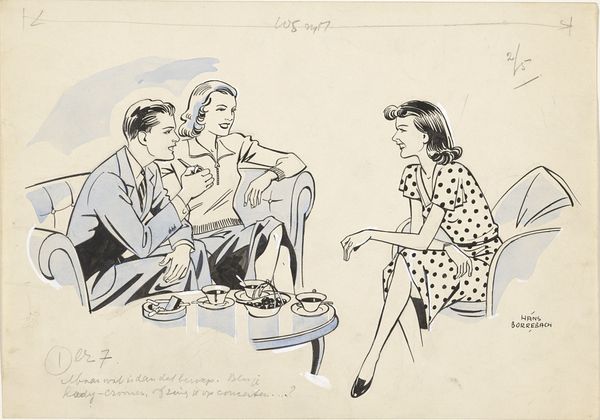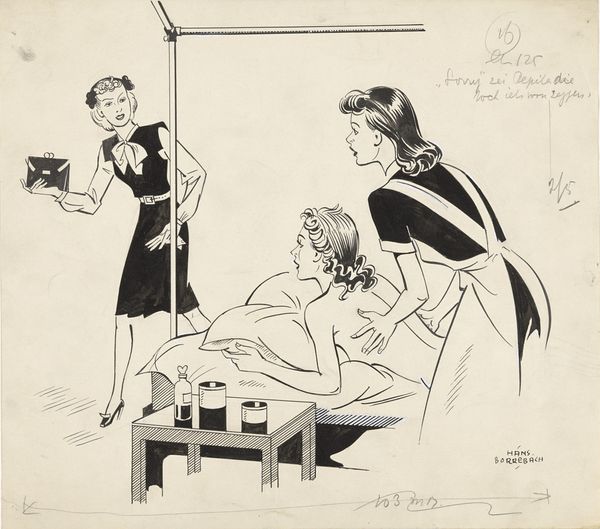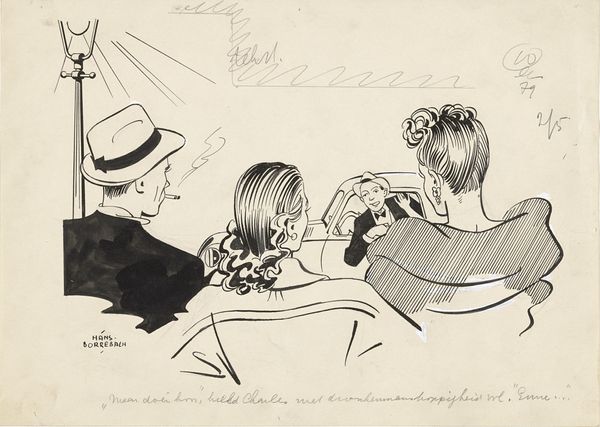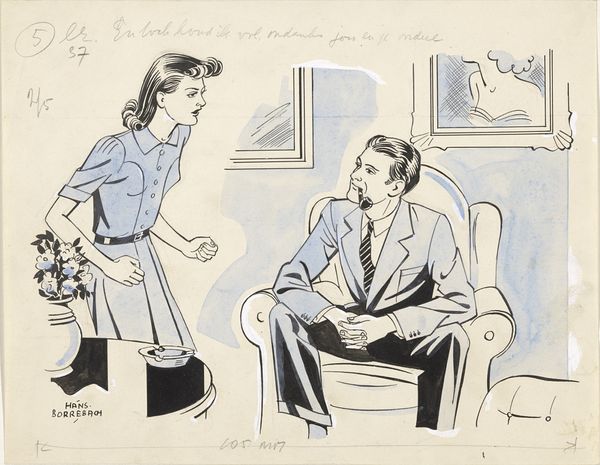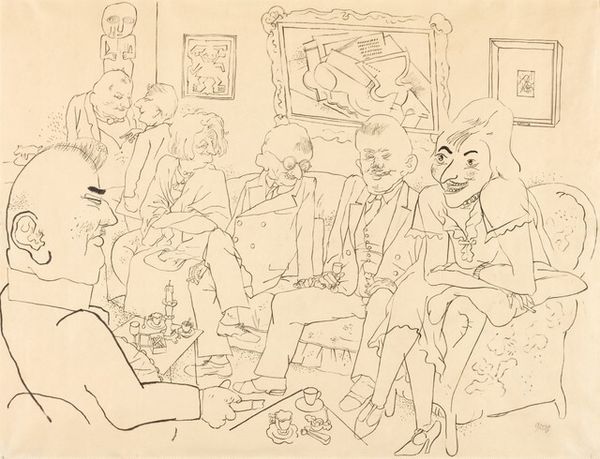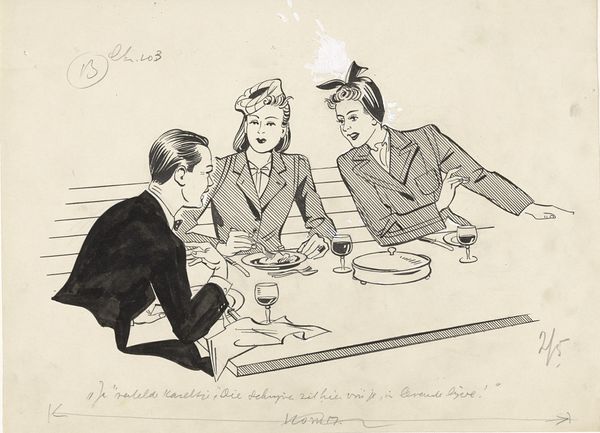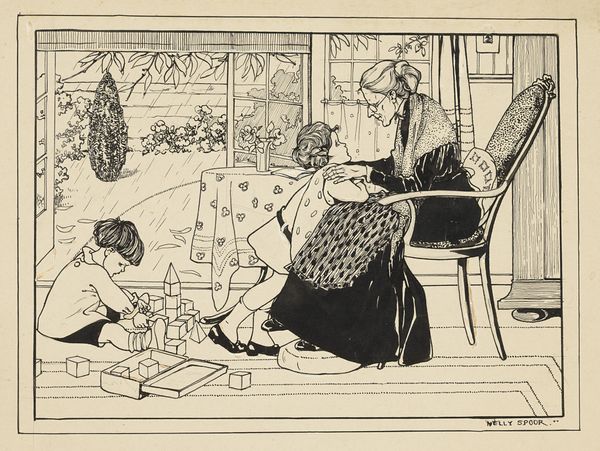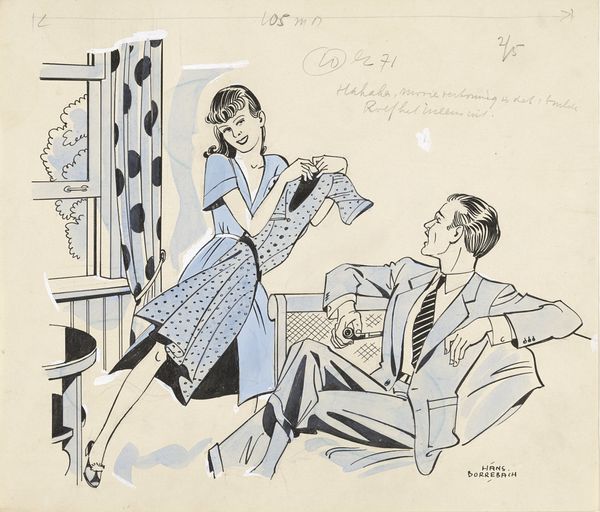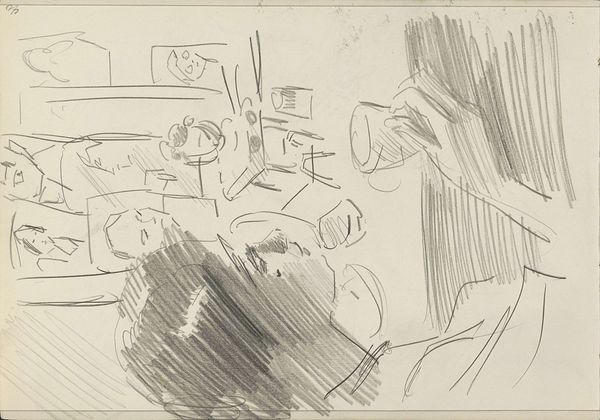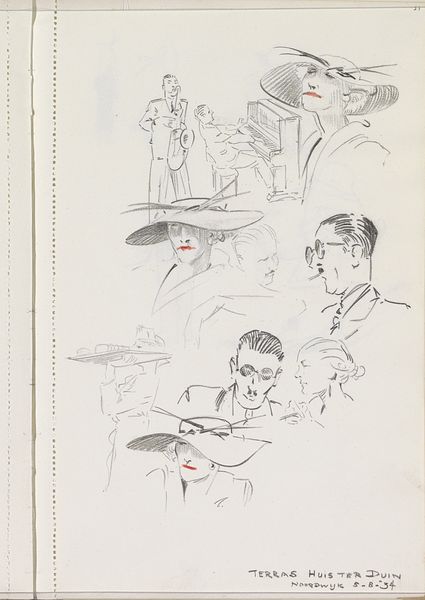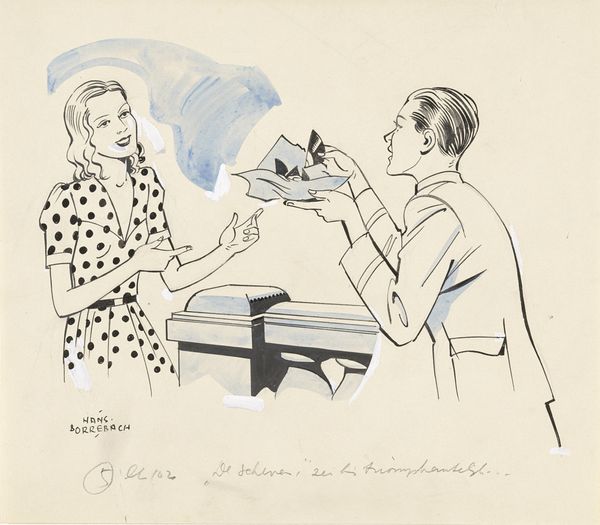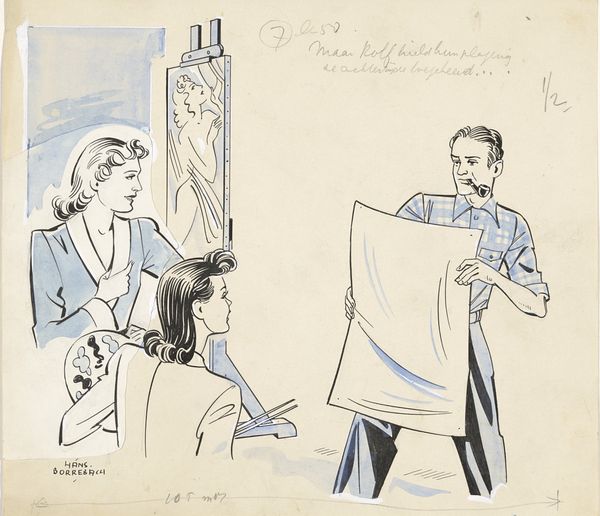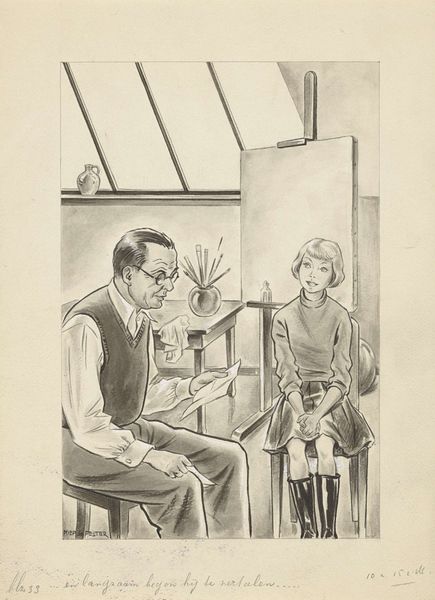
drawing, pen
#
portrait
#
drawing
#
comic strip sketch
#
imaginative character sketch
#
quirky sketch
#
cartoon sketch
#
figuration
#
personal sketchbook
#
idea generation sketch
#
sketchwork
#
sketchbook drawing
#
pen
#
genre-painting
#
storyboard and sketchbook work
#
sketchbook art
#
modernism
Dimensions: height 211 mm, width 276 mm
Copyright: Rijks Museum: Open Domain
Curator: Before you is "Pepita Reading a Newspaper in the Company of Two Friends," a drawing by Hans Borrebach, created before 1948. What are your first thoughts? Editor: Hmm, it feels like a frame ripped from a film noir comic strip. All the characters are elegantly stylized, bathed in these dramatic contrasts of ink... and that tall lamp is a character of its own. Curator: Borrebach was indeed active during a pivotal time. He had to navigate the cultural shifts leading up to and immediately following the Second World War, a period when cartooning was both entertainment and a tool of propaganda. This work appears more observational than politically charged. Editor: It has this cozy, almost claustrophobic feeling. Pepita's absorbed in her news while the others... they almost feel frozen, posing for an old advertisement. Look at that woman’s unnerving stare. Is that admiration, disapproval, or something else entirely? Curator: Such narrative ambiguity was actually common, even in ostensibly straightforward portraiture. Think of the economic anxieties reflected in the careful poses and understated elegance. These were people self-consciously crafting their image in uncertain times. Editor: True, though I find myself more captivated by the technique. The sharp, clean lines remind me of wartime graphic novels; the artist’s choices echo those of American superhero comics or European modernist stylings. It has some clear nods to a "daily life" kind of portrayal as well, if you consider the title and theme. Curator: Yes, the artist clearly has a distinctive aesthetic voice. Consider, too, the material reality. It is just pen and paper, humble mediums elevated through Borrebach's skillful handling. The drawing likely acted as study material or concept work for him. Editor: Right! This doesn’t scream "finished art piece," but it's a perfect seed for one. I picture him using this layout for more ambitious works, exploring all kinds of angles. It seems less about immortalizing individuals and more about figuring out visual codes to convey certain states of mind, relationships, etc. Curator: Indeed. Borrebach's drawing invites us to ponder the subtle power dynamics and silent dialogues present in our everyday interactions. Thank you for sharing your insightful perspectives. Editor: Thanks! And perhaps next time Pepita can share the headlines.
Comments
No comments
Be the first to comment and join the conversation on the ultimate creative platform.
